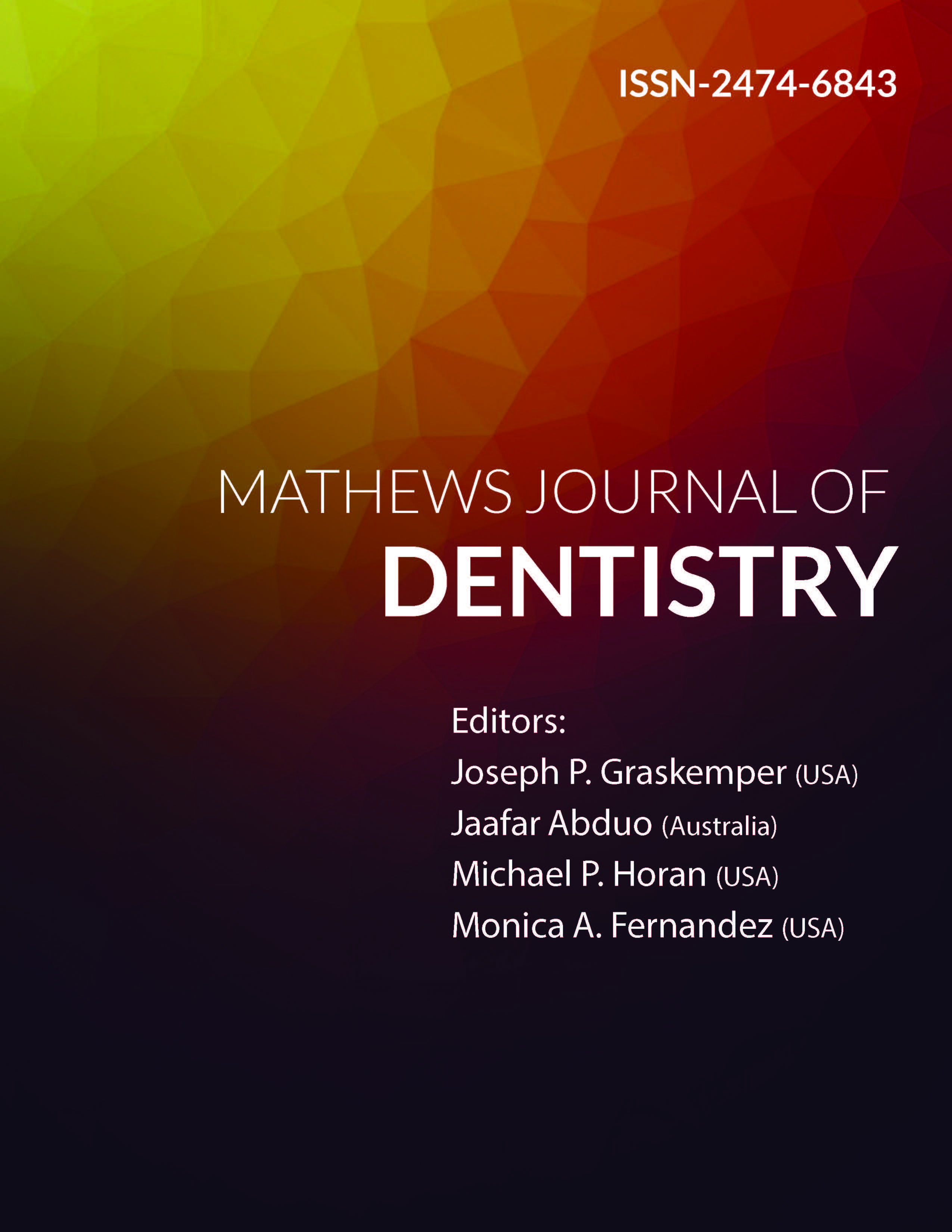
Information Links
Previous Issues Volume 1, Issue 2 - 2016
Cytotoxicity of Dental Ceramics Used for Manufacturing Dental Fixed Prosthesis: A Systematic Review
Waleed Elshahawy1
1Department of Fixed Prosthodontics, Faculty of Dentistry, Tanta University, Tanta, 31111, Egypt.
Corresponding Author: Waleed Elshahawy, Department of Fixed Prosthodontics, Faculty of Dentistry, Tanta University, Tanta, 31111, Egypt, Tel: 2-0106-8754599;
E-Mail: [email protected]
Received Date: 18 Jan 2016
Accepted Date: 03 Oct 2016
Published Date: 07 Oct 2016
Copyright © 2016 Elshahawy W
Citation: Elshahawy W. (2016). Cytotoxicity of Dental Ceramics Used for Manufacturing Dental Fixed Prosthesis: A Systematic Review. Mathews J Dentistry. 1(2): 010.
ABSTRACT
Objectives: The common criterion for ceramic fixed prostheses is their permanent existence in the oral cavity for prolonged time without the ability to be removed by the patient. The purpose of this study was to systematically review the published literature on the cytotoxicity of dental ceramics.
Methods: MEDLINE via PubMed, Google Scholar, and Scopus databases for the period January 1985 to December 2014 were searched with the following key words: (biocompatibility OR cytotoxicity OR cell culture techniques) AND (dental ceramics OR dental porcelain OR ceramic fixed prosthesis). The inclusion criteria included in vitro studies using either animal or human cells, in which the cytotoxicity of the dental ceramics was tested. Studies that evaluated other parameters such as genotoxicity, mutagenicity and carcinogenicity were excluded. Articles published in the English language and in peerreviewed journals focusing on the cytotoxicity of these materials were reviewed.
Results: Available data revealed that substances are released from ceramics into the surrounding tissues; mainly silicon, aluminum, potassium. Few ceramics have shown to be cytotoxic in vitro. The clinical relevance of these findings remains unclear.
Conclusion: Few ceramics have shown to be cytotoxic in vitro, however generally speaking; cytotoxicity of dental ceramics used for manufacturing fixed prosthesis is considered as low with defining ceramics as biocompatible materials. Further in vitro studies, as well as controlled clinical trials, are needed due to possible exceptions. Some bioceramics such as zirconia were proven to be a biomaterial of choice and also osteoconductive material that facilitate bone formation.
KEYWORDS
Ceramics; Cytotoxicity; Patients; Ion release; Biohazards.